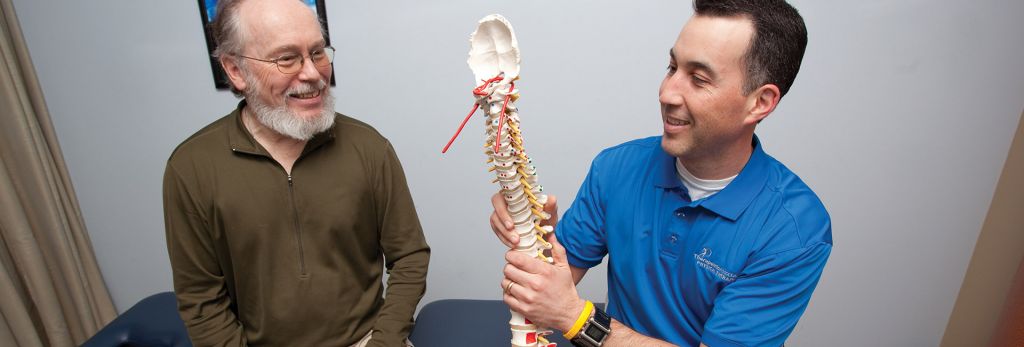Shared Decision Making

Our Approach to Patient-Centered Care
A key focus for Therapeutic Associates Physical Therapy is continuously improving the experience our patients and their family members have during their time at our locations. One aspect of that experience is getting patients more actively involved in the planning of the care they receive. This is known as shared decision making.
On the most basic level, shared decision making is a conversation between a patient and healthcare provider regarding treatment options, goals, and treatment plan. Formally, shared decision making involves five components:
At Therapeutic Associates Physical Therapy, we hope that our patients already have had a shared decision making conversation with their physicians regarding physical therapy, as well as other possible treatment options for their conditions. If they have, this sets a greater base moving forward for more shared decision making conversations. If they have not, they will be introduced to shared decision making at Therapeutic Associates.

Why is shared decision making important?
We believe in putting the patient first and making sure your voice is heard in your care. shared decision making allows the patient to be a part of his or her own healthcare team. After discussing options, you, together with the provider, come up with a plan that includes treatment and follow-up options.

How does shared decision making work?
Physical therapy is comprised of several components, and appointments can be shaped in many ways based on patient needs and patient-therapist preferences. The patient and physical therapist come up with a treatment plan together following their discussion. We don’t expect patients to know everything about physical therapy or exact treatments, but that is part of the education process. We realize time, finances, support, and previous experiences all play a part in the decisions we make.
Sticking with a treatment plan is key to its success, and when people get to share in creating that plan, they are more likely to follow through with the process. As a patient, knowing what your goals are, what type of treatments have worked and not worked for you in the past, and knowing how you learn best can assist you in having a successful shared decision making conversation with your healthcare provider.
How to prepare for a shared decision making conversation:
Part of shared decision making in physical therapy is joint goal setting. Physical therapy is focused on increasing function, from more strenuous activities like walking and running to daily tasks like housework or brushing your teeth. To make physical therapy individualized and appropriate for each patient, we like to ask about functional activities that are currently limited due to pain, weakness, or another condition. The Patient-Specific Functional Scale assists in the conversation with your therapist regarding goals, and may include up to 3 things you’re having trouble doing that you would like to work on in physical therapy.
In anticipation of your first appointment, come prepared with the functional goals you may have with physical therapy to aide in your conversation with your physical therapist.
